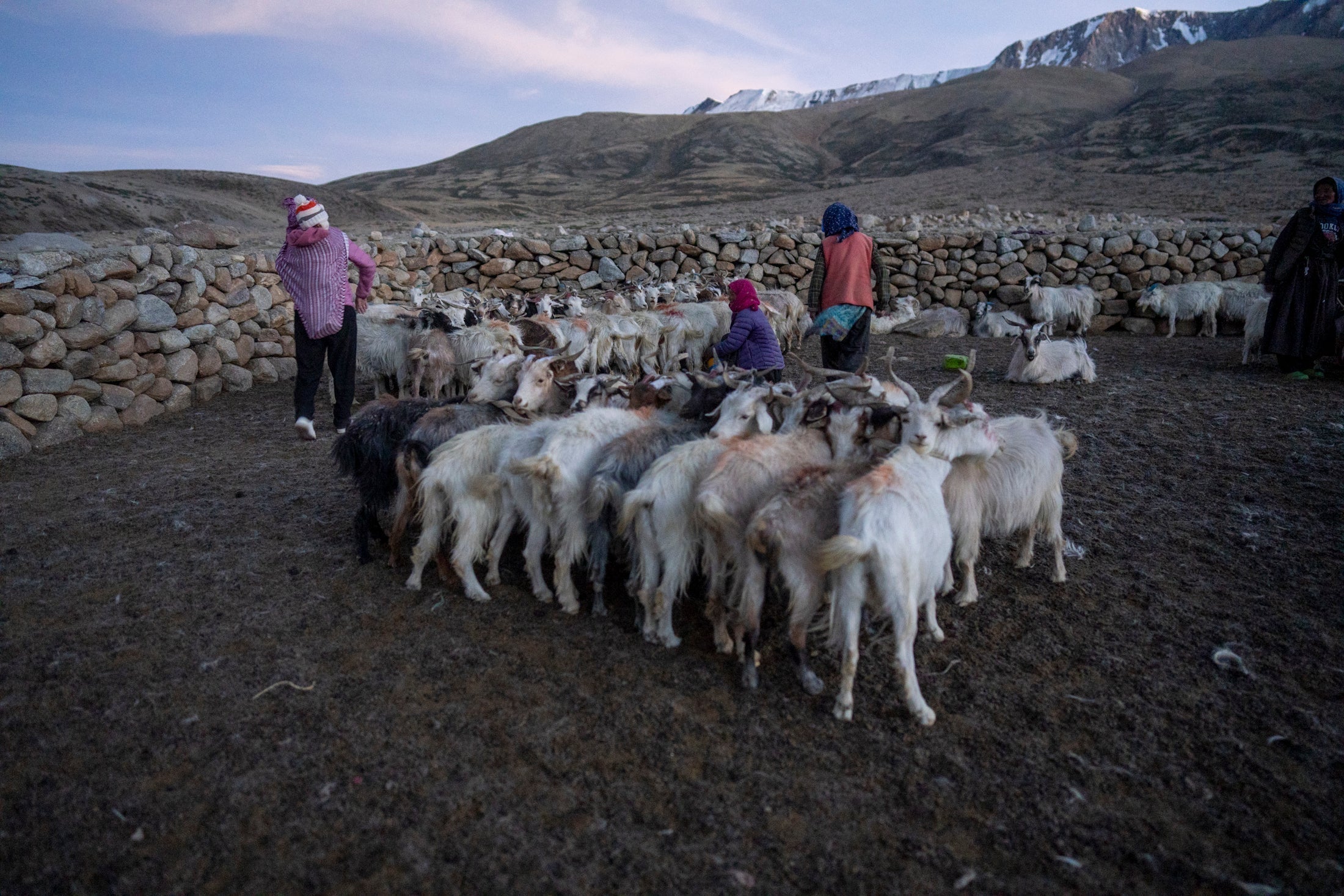Pashmina vs. Cashmere – A Subtle Yet Significant Difference
Pashmina is often mistaken for cashmere, yet there are crucial differences between these two precious materials. While the term cashmere is generally used for wool obtained from various goat breeds – including the Capra hircus laniger cashmere goat, which is found in different regions of Asia – the wool itself has a wider geographical distribution (Mongolia, China, Iran, Nepal, and India) and the term is not protected. This lack of regulation allows lower-quality fibers to be marketed as cashmere.
In contrast, true Pashmina comes exclusively from the Changthangi goat, native to the high-altitude region of Ladakh in the Himalayas. Only the finest fibers from this rare breed are used to create high-quality Pashmina shawls.
Quality Criteria for Pashmina
Pashmina is distinguished by its exceptional fineness and softness. Compared to regular cashmere, Pashmina adheres to much stricter quality standards:
- Fiber fineness: 13 – 19 microns (for comparison, sheep’s wool is around 30 microns)
- Fiber length: More than 5cm, allowing it to be hand-spun and woven
- Natural colors: White (the most valuable), brown, and gray
Producing a single Pashmina shawl requires fibers from multiple goats, as only about 35% of the collected wool is suitable for fine yarn production.
The Processing of Pashmina
The refinement of Pashmina follows an intricate, entirely manual process that preserves centuries-old traditions:
- Combing: The fibers are carefully combed by hand to maintain their quality.
- Cleaning and sorting: Dirt and coarse fibers are removed.
- Hand-spinning: The yarn is spun using traditional Charkha wheels.
- Dyeing: Natural or synthetic dyes are carefully applied.
- Weaving: Skilled artisans use traditional looms to transform the fine yarn into exquisite, intricately woven fabrics.
Why Handcrafting Matters
The traditional craftsmanship, carried out with patience and the utmost precision, ensures that each Pashmina piece is truly one of a kind – imbued with centuries of artistry and heritage. This stands in stark contrast to modern machine processing, which is commonly used in mass-produced cashmere today.
Industrial techniques can damage the delicate Pashmina fibers, diminishing their softness, structure, and unique character. As a result, true Pashmina is not suited for machine processing – it remains a symbol of authentic craftsmanship and unparalleled exclusivity.
A Legacy of Elegance & Artistry
Pashmina embodies timeless elegance and masterful craftsmanship—a tradition that has endured for centuries, despite ongoing regional unrest and economic challenges in Kashmir and Ladakh over the past century. Today, industrial mass production further threatens the livelihoods of the nomadic communities and artisans who have dedicated generations to this extraordinary craft. Yet, Pashmina remains a living testament to heritage, artistry, and an unwavering commitment to excellence.


